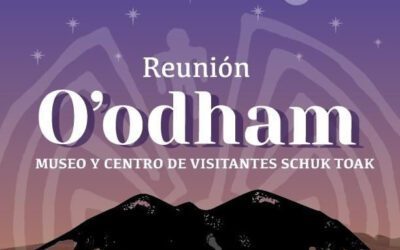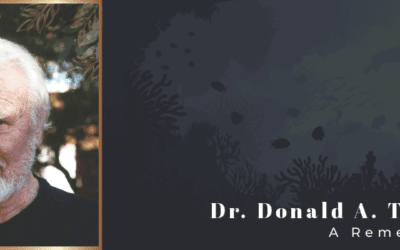[vc_row][vc_column][vc_separator][vc_column_text]By: Rafael Barceló Durazo | Consul of Mexico in Tucson, Arizona[/vc_column_text][/vc_column][/vc_row][vc_row][vc_column][vc_column_text]We are the sons and daughters of a fiery but beautiful summer, now faced with climate change[/vc_column_text][/vc_column][/vc_row][vc_row][vc_column][vc_column_text]– Why do you live here?[/vc_column_text][/vc_column][/vc_row][vc_row][vc_column width=”1/2″][vc_column_text]This is what a stranger who came to visit me years ago in the fiery summer of Sonora asked me in amazement. The candor with which he asked the question, with the sweat on his forehead and the astonished expression of someone who feels the extreme temperatures of this region for the first time, just made me laugh. My answer was rather obvious, and avoided his further questioning: “because we are from here.” The visitor continued arguing that it’s not normal for someone to have chosen this climate to settle down or that, having gotten here by mistake, someone would stay voluntarily.[/vc_column_text][/vc_column][vc_column width=”1/2″][vc_single_image image=”1677″ img_size=”full” add_caption=”yes” onclick=”link_image”][/vc_column][/vc_row][vc_row][vc_column width=”1/2″][vc_single_image image=”1690″ img_size=”full” add_caption=”yes” onclick=”link_image”][/vc_column][vc_column width=”1/2″][vc_column_text]A few weeks ago, I had the pleasure of talking with Verlon José, a prominent member of the Tohono O’odham Nation –the people of the desert– whose home for thousands of years has been this Sonoran-Arizona desert, a land that is part of both Mexico and the United States. Nobody is better equipped than the native peoples of the area to answer the question of why we live here.
Verlon beautifully explained to me the deep relationship with the land and the territory of his indigenous nation: while the “western” idea is that the land belongs to each individual, the understanding of indigenous peoples is that they are the ones who belong to the land.[/vc_column_text][/vc_column][/vc_row][vc_row][vc_column][vc_column_text]As I pondered this comment, which contains a very profound teaching, I realized that there was some truth in the obvious answer that I gave my friend. The bonds that we create with the land that has been our home are so strong, that we consider ourselves of it, or rather, it of us. It’s a relationship of belonging.[/vc_column_text][/vc_column][/vc_row][vc_row][vc_column width=”1/2″][vc_column_text]Certainly, there are territories that caress their creatures with a better climate most of the year. Mexico is fortunate to have eternal springs in its central highlands where, in addition, there was never a lack of water until there was an excess of people. But the rough caress of a suffocating summer or a harsh winter is like the lessons of a strict mother or father, because they carry some measure of love. Stormy afternoons, full of lightning and thunder, are the loving intermission of the summer season in these deserts. The rains that cool the night and leave the next morning perfumed with the aroma of wet earth are the permanent hope that helps you cope with the hottest and driest days of summer.[/vc_column_text][/vc_column][vc_column width=”1/2″][vc_single_image image=”1683″ img_size=”full” add_caption=”yes” onclick=”link_image”][/vc_column][/vc_row][vc_row][vc_column width=”1/2″][vc_single_image image=”1684″ img_size=”full” add_caption=”yes” onclick=”link_image”][/vc_column][vc_column width=”1/2″][vc_column_text]When I arrived in Tucson almost a year ago, the season of these dramatic and stormy rains—that are called monsoons around here (and which I knew simply and bucolically as the waters)—had been insignificant. This year, however, we have been able to enjoy the gratifying heavenly shows of light and sound that precede the showers. These give us cool temperatures and almost immediately turn green the grays and ochers that this beautiful ecosystem—which manages a lot of life but teaches it in small doses—has made us be accustomed to.[/vc_column_text][/vc_column][/vc_row][vc_row][vc_column][vc_column_text]After having lived far away for many years, reliving the sensory experience of the intense summer in this region, with its sweetness and bitterness, convinced me again that there’s no nonsense for human beings to have made the desert their home. It is a test of our ability to adapt and of nature’s generous response to provide us with food. It is also a reminder of the fragility of any habitat to make human life sustainable—if we don’t take care of it so that any economic development is sustainable, there won’t be any development at all.[/vc_column_text][vc_column_text]The two notions about the relationship between human beings and the land that Verlon explained to me have practical repercussions: if the land is our property, we then have the right to exploit it until it’s exhausted and useless. If we are the ones who belong to the land, then we have the obligation to take care of it, giving ourselves the luxury of contemplating it and reap its fruits, but with the responsibility of conserving it for future generations, like someone who received a treasure.[/vc_column_text][/vc_column][/vc_row][vc_row][vc_column width=”1/2″][vc_single_image image=”1679″ img_size=”full” onclick=”link_image”][/vc_column][vc_column width=”1/2″][vc_column_text]We are the sons and daughters of a fiery but beautiful summer, who now face the challenge of climate change that could make our land uninhabitable. The task of changing habits and routines until they are friendly to our environment will be difficult, but we desert brood like the toughest of challenges.[/vc_column_text][vc_column_text]Rafael Barceló Durazo from Sonora is the consul of Mexico in Tucson. You can find him on social media as @barcelodurazo.[/vc_column_text][/vc_column][/vc_row][vc_row][vc_column][vc_separator style=”shadow” border_width=”2″][vcj_team_member image=”1691″ name=”About the Author:” layout=”style3″ image_ratio=”portrait” color_name=”#ca972e”]Rafael Barceló Durazo
Rafael Barceló Durazo was appointed Consul of Mexico in Tucson, Arizona, and took office on August 1st, 2020. Previously, he served as Deputy Director General for International Policy on Human Rights at the Mexican Ministry of Foreign Affairs, responsible for international migration and refugee on multilateral fora, and for the representation of cases at the Universal and Inter-American Human Rights Systems, as well as other civil and political rights.
He is a career diplomat in the Mexican Foreign Service since 2010. He also served as a Press and Cultural Attaché at the Embassy of Mexico in Brazil and as Political Affairs and Human Rights Attaché at the Embassy of Mexico in Costa Rica, also performing as Mexican liaison officer at the Inter-American Human Rights Court. He was also a consultant at the Mexican Supreme Court of Justice, a supervisor at the Institute of Youth in Sonora state, and at the Mexican Investment Consultant Office located in Hermosillo, Sonora.[/vcj_team_member][vc_column_text]Consul Rafael Barceló is a Lawyer by the University of Hermosillo and has a master’s degree in Administration and Public Policy by the Mexican Centro de Investigación y Docencia Económicas (CIDE). He was an exchange student at the School of International and Public Affairs at Columbia University (New York) and was a professor on public policy and public finances at the Universidad Iberoamericana in Mexico City.[/vc_column_text][/vc_column][/vc_row][vc_row][vc_column][vc_column_text][ctct form=”1153″ show_title=”false”][/vc_column_text][/vc_column][/vc_row]









0 Comments